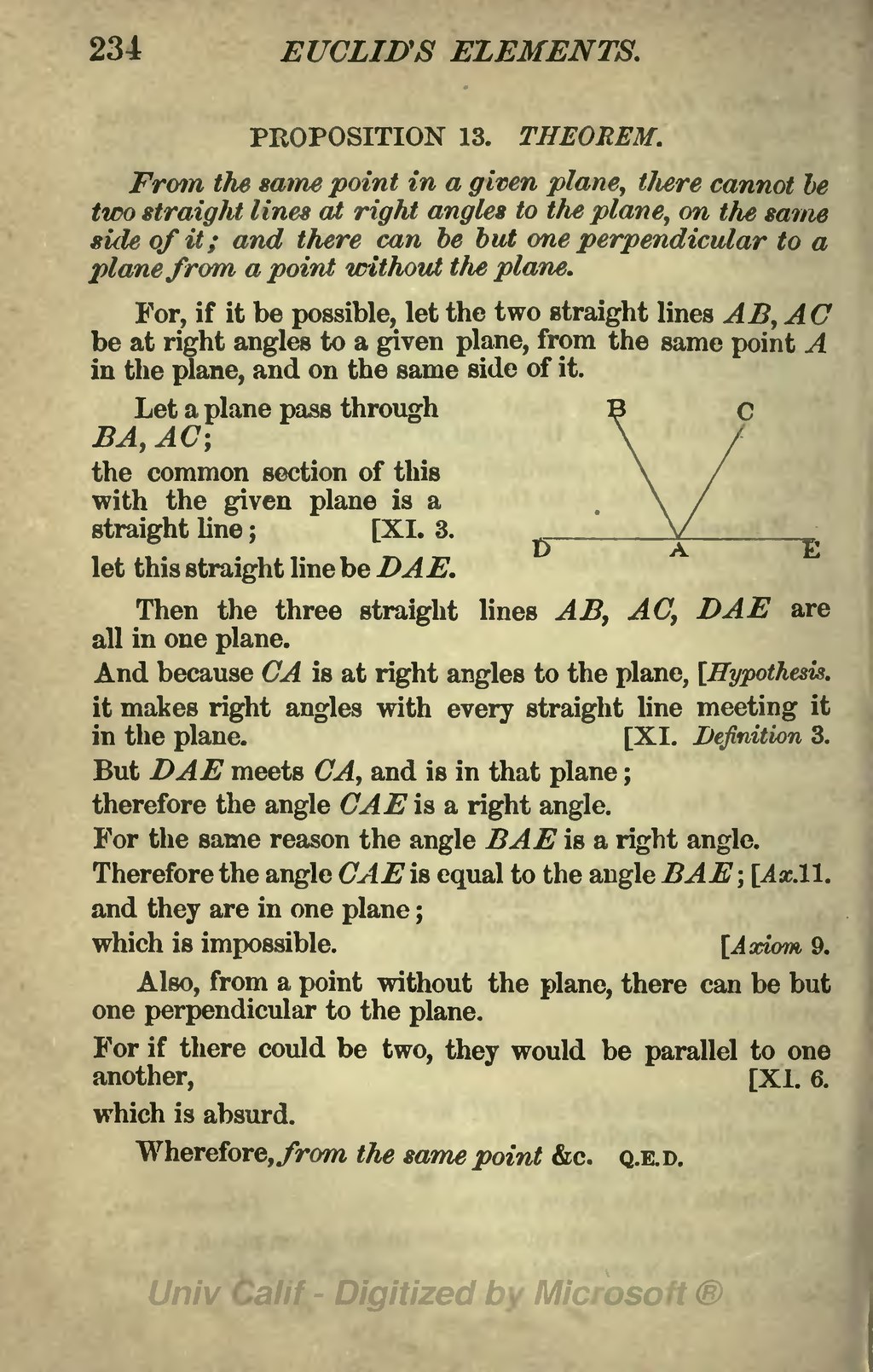PROPOSITION 13. THEOREM.
From the same point in a given plane, there cannot be two straight lines at right angles to the plane, on the same side of it; and there can he hut one perpendicular to a plane from, a point without the plane.
For, if it be possible, let the two straight lines AB,AC be at right angles to a given plane, from the same point A in the plane, and on the same side of it.
 Let a plane pass through BA, AC;
Let a plane pass through BA, AC;
the common section of this with the given plane is a straight line; [XI. 3.
let this straight line be DAE.
Then the three straight lines AB, AC, DAE are all in one plane.
And because CA is at right angles to the plane, [Hypothesis.
it makes right angles with every straight line meeting it in the plane. [XI. Definition 3.
But DAE meets CA, and is in that plane; therefore the angle CAE is a right angle. For the same reason the angle BAE is a right angle. Therefore the angle CAE is equal to the angle BAE; [Ax.ll.
and they are in one plane; which is impossible. [Axiom 9.
Also, from a point without the plane, there can be but one perpendicular to the plane.
For if there could be two, they would be parallel to one another, [XI. 6.
which is absurd.
Wherefore, from the same point &c. q.e.d.
